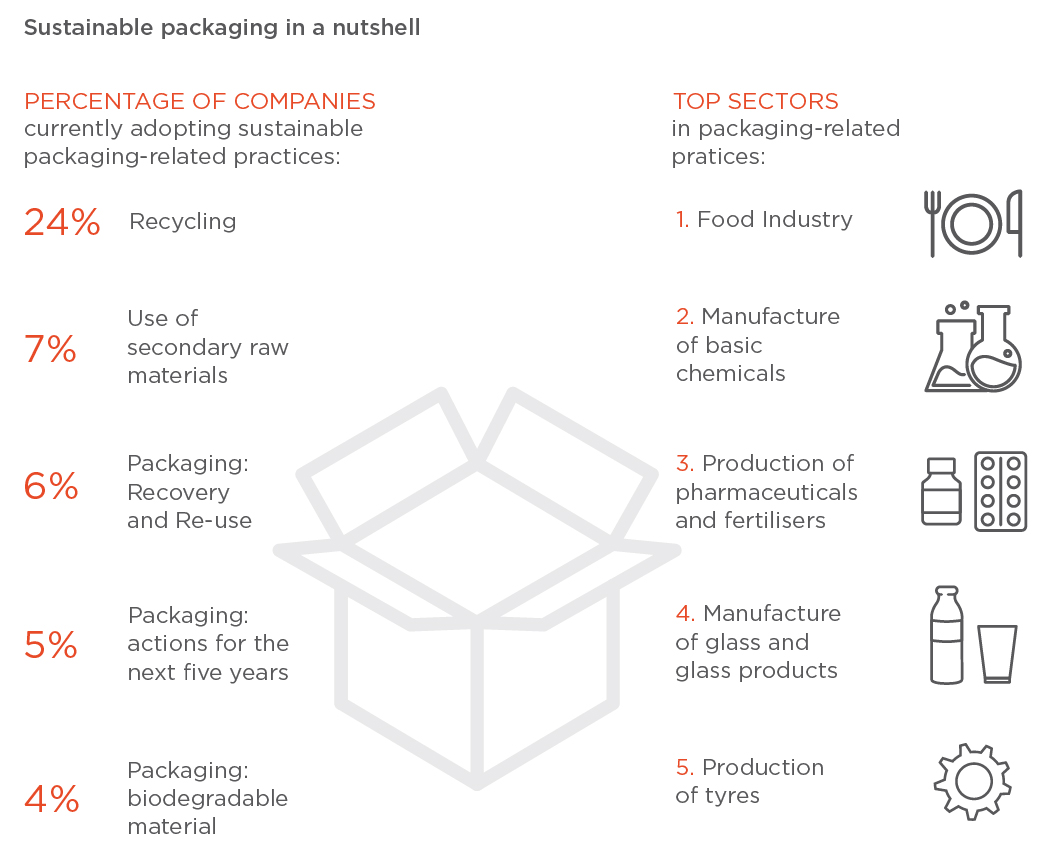
Environmental sustainability also depends on drastically reducing packaging waste. In Italy, about a quarter of urban solid waste, according to figures from Conai, the national packaging consortium, comes from packaging waste. But how can companies respond to this problem, which involves producers, many of whom are concentrated in the Bologna packaging district, and users, when designing and making packaging for their products? And what will happen in the face of increasingly stringent rules?
A survey of a large sample of 3928 companies by the Sustainability Measurement and Management Laboratory (SuMM), part of the Centre for Sustainability and Climate Change at the Bologna Business School, reveals that in one in four cases, companies go beyond their legal obligations in terms of recycling processes, but only marginally use four other practices that can contribute to the sustainability of packaging. The analysis also indicates next steps for companies themselves, but also for the policies that influence this activity.
The best news comes from the side of recycling processes, for which there are obligations indicated in Italy by two norms of 2006 and 2020: 24% of the companies in the sample have already put in place precise actions, even beyond what is required by the legislation, which includes two European directives of the Circular Economy Package. The other possible areas of intervention, however, see a marginal response from companies: only between 4 and 7% of respondents use secondary raw materials, i.e., materials derived from recycling, or biodegradable materials (thus excluding plastic and its derivatives) for the packaging of their products, or recover and reuse packaging, or have plans to implement further practices in the next 5 years.

The SuMM survey also reveals significant regional disparities, with Emilia-Romagna and Abruzzo being the most virtuous regions, and a high percentage of use of biodegradable materials in southern Italy, but this could be attributed to the fact that most companies surveyed in this area operate in the agri-business, where the use of cardboard packaging and reusable fruit crates is widespread.
The difference between sectors of the economy is more significant. The agro-food industry is very active on these issues, perhaps also because of its exposure to end customers, among whom sensitivity to sustainability issues is growing, and stands out in the data compared to others. Other sectors where the most virtuous packaging practices are more widespread are the basic chemical industry, pharmaceuticals, fertilizers, glass production and tire production. The leaders in their respective sectors are Ferrero, Versalis, Baxter, Bormioli Rocco and Michelin.
The picture of the situation in Italy still shows many delays: less than 15% of Italian companies have developed sustainability processes and sustainable packaging at industrial level has been adopted by 4-6% of companies. At a time when rules are becoming more stringent, achieving objectives can become problematic. The European Union has identified the elimination of waste in packaging, particularly the use of plastics, as a priority and is aiming for the ambitious goal of 100% reusable or recyclable packaging by 2030.
The next steps suggested by SuMM therefore become urgent. For companies, this requires the implementation of new management tools such as the Life Cycle Assessment and eco-design strategies, as well as the involvement of the supply chain. Packaging sustainability goals should be integrated into the assessment of company performances. At the level of the industrial system, the circular economy should be communicated as a business opportunity that can offer an answer not only to increasingly stringent regulations, but also to the demand of more aware consumers.
However, the path of companies must also be supported and encouraged by policy choices: on the one hand with incentive systems, such as tax credits or the creation of digital platforms for secondary raw materials, and on the other with the reduction of regulatory fragmentation. There is a need for simplified rules that can be translated into operational guidelines. This is the only way to spread virtuous practices that will make it possible to achieve the challenging international objectives.



